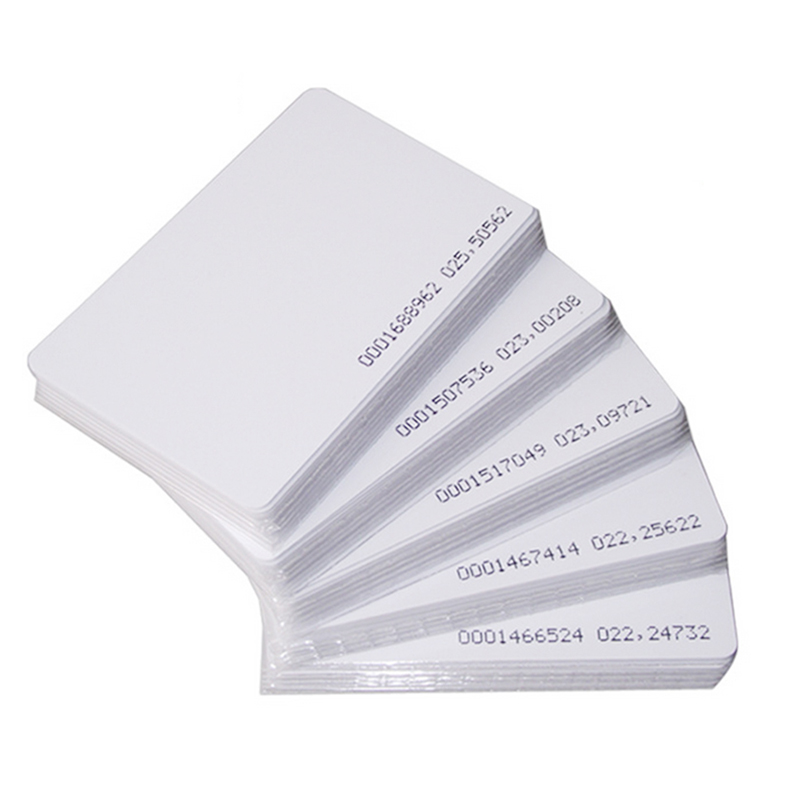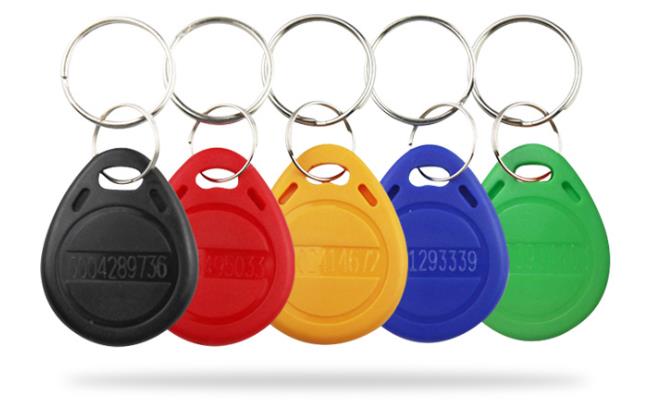What is RFID Technology. A Beginner's Guide

What is RFID Technology? A Beginners Guide
Radio Frequency Identification (RFID) is a technology that uses electromagnetic fields to automatically identify and track tags attached to objects. These tags can contain a wide range of information, from simple identification numbers to detailed product data. RFID is used across industries, from retail and logistics to healthcare and manufacturing, providing a highly efficient way to manage, track, and store data.
How RFID Works
At its core, RFID involves three primary components:
- RFID Tag: This is a small device containing an antenna and a microchip that stores data. The tag can be passive (no power source), active (powered by a battery), or semi-passive (battery-assisted).
- RFID Reader: The reader sends out electromagnetic waves that power passive tags and receive the data from the tag, which can then be processed.
- RFID Antenna: The antenna allows communication between the reader and the tag, transmitting data and signals.
When the reader emits a radio frequency signal, it wakes up the tag, which responds by transmitting the stored information. This makes RFID much faster and more efficient compared to traditional barcode systems, which require line-of-sight scanning.
Key Benefits of RFID Technology
Improved Efficiency
One of RFIDs key advantages is speed and automation. In warehouses, for instance, RFID systems can scan hundreds of items simultaneously, as opposed to traditional barcodes, which require each item to be scanned individually. This significantly boosts efficiency. According to a study by Zebra Technologies, businesses that implemented RFID experienced a 25% increase in inventory accuracy and a 30% improvement in stock replenishment time .
Increased Accuracy
Because RFID tags can be read remotely and automatically, they reduce human error. Companies like Walmart, which implemented RFID in its supply chain, have reported a 16% increase in inventory accuracy, leading to better stock management and reduced shrinkage . This accuracy translates into fewer stockouts and higher customer satisfaction.
Enhanced Security
RFID also boosts security by offering better tracking of goods and assets. In healthcare, for example, RFID is used to monitor the movement of high-value assets like medical equipment and drugs. A report from McKinsey highlighted that hospitals that adopted RFID reduced equipment loss by 35%, saving millions annually .
Types of RFID Tags
RFID tags come in three main categories, each suited for different applications:
Passive RFID Tags: These do not have their own power source. Instead, they rely on the RFID reader to power them. They are commonly used in applications where cost is a major concern, such as tracking inventory in retail.
Active RFID Tags: These are battery-powered and can actively transmit their signals over greater distances. Active tags are used in industries like transportation and logistics, where real-time tracking of assets (like shipping containers) is required.
Semi-Passive RFID Tags: These have an internal battery but only use it to power the chip. The communication with the reader is still passive. Semi-passive tags are often used in environments where temperature tracking is necessary, such as in the pharmaceutical supply chain.
Applications of RFID Across Industries
RFID technology is being used in a wide range of sectors, driving innovation and transforming business models.
Retail
RFID is revolutionizing the retail industry, particularly in inventory management and loss prevention. Clothing retailer Zara has implemented RFID across all its stores worldwide. The technology has improved inventory visibility, ensuring that staff can quickly locate any item in the store. As a result, Zara reported a 10% increase in sales due to improved product availability and stock accuracy .
Healthcare
In healthcare, RFID is being used to track critical assets, manage inventory, and improve patient care. The Ohio State University Medical Center implemented RFID to manage the location of surgical equipment. By knowing exactly where critical tools are, the hospital reduced surgical delays by 15%, resulting in better patient outcomes and cost savings .
Supply Chain & Logistics
RFID is helping companies optimize their supply chains by improving asset tracking and inventory management. Companies like Amazon use RFID to track inventory in their fulfillment centers, improving the speed of order processing and reducing errors. RFID implementation led to a 35% reduction in time spent locating products, improving Amazons delivery times and customer satisfaction .
Manufacturing
In manufacturing, RFID is used to track parts and products through various stages of production. Ford Motor Company uses RFID to track vehicle components during assembly. This has helped reduce assembly errors by 20%, leading to fewer recalls and increased customer satisfaction .
Case Studies: The Impact of RFID on Business Performance
Walmarts RFID Success
Walmart was one of the earliest adopters of RFID technology in retail. By using RFID to track inventory across its massive supply chain, Walmart saw a 16% improvement in stock accuracy and a 9% reduction in stockouts, translating to higher sales and improved customer experience . RFID also helped Walmart streamline its supply chain, reducing the time it takes to replenish stock and cut operational costs.
Delta Airlines’ RFID Luggage Tracking
Delta Airlines implemented RFID to track passengers luggage in real-time. Since the technologys introduction, Delta has reported a 99.9% success rate in delivering bags on time, compared to an industry average of 97%. This has led to a significant reduction in compensation claims for lost luggage and improved customer satisfaction .
Future Trends in RFID
RFID and the Internet of Things (IoT)
As RFID technology continues to evolve, its integration with the Internet of Things (IoT) is creating new opportunities for businesses. The combination of RFID and IoT allows for real-time data collection, enabling businesses to monitor their assets in ways that were not possible before. For example, by embedding RFID tags in products, companies can gather valuable data about how those products are used, providing insights that can inform future product development.
Miniaturization of RFID Tags
As RFID technology advances, tags are becoming smaller and more cost-effective. According to IDTechEx, the global RFID market is expected to reach $13.3 billion by 2024 , driven by the growing demand for smaller, more powerful tags.
Conclusion: Why RFID is the Future
RFID technology is rapidly changing the way businesses operate by improving efficiency, accuracy, and security. From retail and healthcare to logistics and manufacturing, RFID is providing valuable insights that help businesses streamline their operations and better serve their customers.
Whether you are a retailer looking to improve inventory accuracy or a healthcare provider aiming to track assets, RFID offers a reliable, scalable solution that can provide a competitive edge. By staying ahead of these trends, businesses can capitalize on RFID’s potential to boost revenue, reduce costs, and drive innovation.
References:
- Zebra Technologies, Inventory Accuracy Report (2020).
- Walmart Case Study, Supply Chain Dive (2021).
- McKinsey & Company, RFID in Healthcare: Increasing Asset Management Efficiency (2019).
- Zara RFID Implementation, Forbes (2020).
- Ohio State University RFID Case, Healthcare IT News (2018).
- Amazon RFID Use Case, Supply Chain Brain (2021).
- Ford RFID Use in Manufacturing, Automotive News (2020).
- Walmart RFID Success, RFID Journal (2021).
- Delta Airlines RFID, CNN Business (2019).
- IDTechEx RFID Market Report (2022).
Related Products

RFID systems operate at different frequencies, each with its unique characteristics, advantages, and applications. The main frequency bands used in RFID are Low Frequency (LF), High Frequency (HF), Ultra-High Frequency (UHF), and Microwave Frequency. Heres a detailed look at each frequency band and its typical applications:
Low Frequency (LF)
Frequency Range: 30 kHz to 300 kHz (typically 125 kHz or 134.2 kHz)
Characteristics:
- Short read range (up to 10 cm)
- Low data transfer rate
- High resistance to interference from metals and liquids
Applications:
- Animal Tracking: LF RFID tags are commonly used for identifying and tracking livestock and pets.
- Access Control: LF systems are often used in secure access control for buildings and vehicles.
- Asset Tracking: Suitable for tracking high-value assets in environments where metal and liquids are present.
High Frequency (HF)
Frequency Range: 3 MHz to 30 MHz (typically 13.56 MHz)
Characteristics:
- Moderate read range (up to 1 meter)
- Higher data transfer rate than LF
- Moderate resistance to interference
Applications:
- Smart Cards: Used in contactless payment cards, ID cards, and transit passes.
- Library Systems: HF RFID is widely used for tracking books and materials in libraries.
- Inventory Management: Suitable for tracking items in retail and supply chain management.
- Healthcare: Used for patient tracking, medication management, and equipment monitoring.
Ultra-High Frequency (UHF)
Frequency Range: 300 MHz to 3 GHz (typically 860 MHz to 960 MHz)
Characteristics:
- Long read range (up to 12 meters or more)
- High data transfer rate
- More sensitive to interference from metals and liquids
Applications:
- Retail Inventory: Widely used in retail for inventory management and loss prevention.
- Logistics and Supply Chain: Used for tracking shipments, pallets, and containers.
- Asset Tracking: Suitable for large-scale asset tracking in industrial environments.
- Vehicle Identification: Used for toll collection, parking management, and vehicle tracking.
Microwave Frequency
Frequency Range: 2.45 GHz and 5.8 GHz
Characteristics:
- Long read range (up to 30 meters or more)
- High data transfer rate
- More prone to interference from environmental factors
Applications:
- Electronic Toll Collection: Used for automatic toll collection systems on highways.
- Railway Tracking: Suitable for tracking railway cars and managing rail logistics.
- Automated Identification Systems: Used in various automated tracking and identification applications.
Choosing the Right Frequency
Selecting the appropriate RFID frequency depends on the specific application requirements, including read range, data transfer rate, environmental conditions, and cost considerations. Here are some guidelines to help choose the right frequency:
- Short-Range Applications: LF and HF are suitable for applications that require short read ranges and where interference from metals and liquids is a concern.
- Medium-Range Applications: HF provides a balance between read range and data transfer rate, making it ideal for inventory management and access control.
- Long-Range Applications: UHF and Microwave frequencies are suitable for applications that require long read ranges and high-speed data transfer, such as logistics, supply chain management, and vehicle identification.
By understanding the characteristics and applications of each RFID frequency band, organizations can make informed decisions to deploy RFID systems that best meet their operational needs and enhance their data collection and management processes.



